Pantry Staples and Kitchen Essentials
This post may contain affiliate links. Please read my disclosure policy.
Stock your kitchen with Pantry Staples and essential items to keep on hand for making quick and easy meals anytime, even when you can’t make a trip to the grocery store.
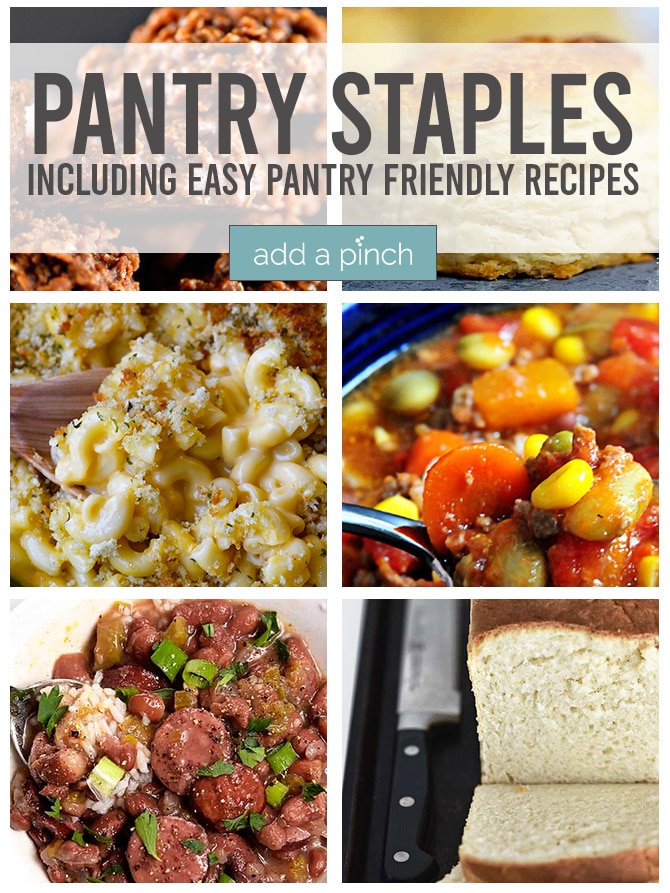
I am a meal planner through and through. I love to know exactly what we are going to have for breakfast, lunch, and dinner on any given day of the week. I also like to keep items in my pantry, refrigerator, and freezer that I can quickly pull together for meals my whole family loves in the event that I can not make it to the grocery store.
This list includes items that I believe are an important part of any pantry for easy meals at home that the whole family will enjoy. These pantry staples are basic items that are frequently used and are generally inexpensive to keep on hand. If your family has dietary restrictions, simply substitute with your family’s alternative option or omit from your pantry staples list.
Pantry Staples and Kitchen Essentials
There are several dry goods, canned items and more that are always important ingredients to keep on hand in your pantry. They are also usually inexpensive and easy to buy in bulk. It is important to practice proper food hygiene and safety. For each of the items listed, I’ve included information on how to store them properly.
Here are some pantry staples that I keep in my pantry:
- Flour: all-purpose, self-rising
- Sugar: granulated, brown, confectioners (powdered), honey, maple syrup, other sweeteners
- Baking Soda
- Baking Powder
- Yeast
- Cornstarch
- Cornmeal
- Rice: brown, white
- Pasta
- Oats
- Dry and Canned Beans: pinto, black, navy, black-eyed peas, kidney, garbanzo
- Potatoes: white, sweet
- Onions
- Canned Vegetables and Fruits
- Protein: Peanut Butter, Tuna, etc
- Peanut Butter or other Nut Butters
- Condiments, Spices and Oils
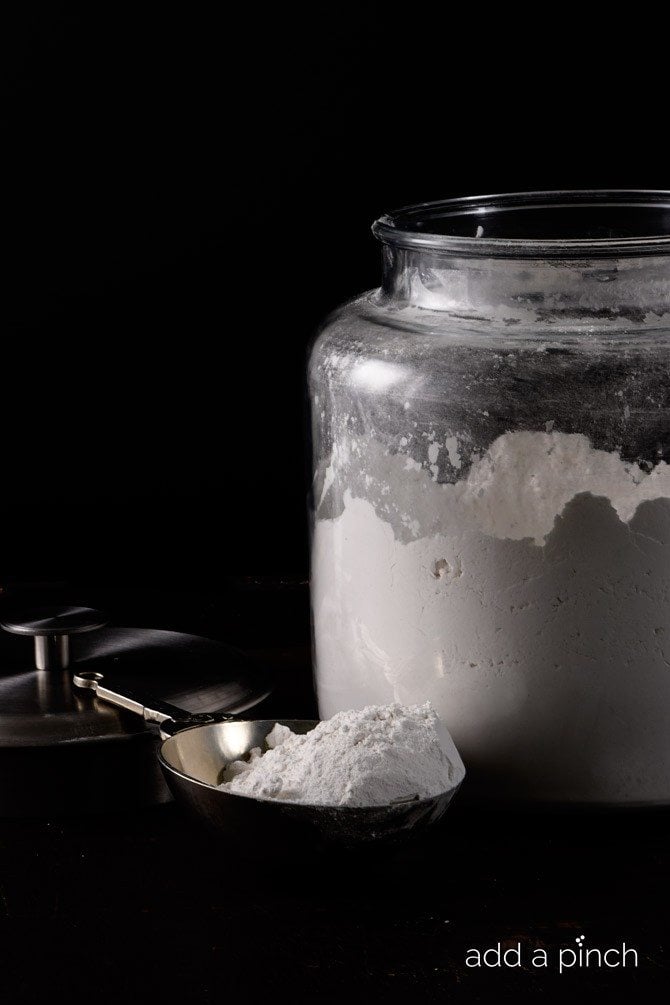
Flours
Flour is a definite pantry staple for baking and cooking. It’s used for biscuits of all kinds, cakes pies, cookies, or for thickening sauces or soups. I usually keep both all-purpose and self-rising flours on hand, but if run out of self-rising flour and need some in a pinch, it’s easy to make your own self-rising flour.
How long does flour last?
Flour should be stored in a cool, dry environment to extend the shelf life as much as possible. You can leave the flour in the original packaging inside of an airtight container or inside of a large zip-top storage bag. This way you can clearly see the information contained on the packaging before use. When ready to use, you can decant the flour into a large airtight container, if you prefer.
Each package should be marked with a best before date. This is when the flour is at its optimal freshness. Even when using within the best before date, it is recommended to check your flour for freshness and make sure that it is safe to use. For instance, whole grain flour tends to go rancid more quickly than bleached white flour. You will also want to inspect your flour to make sure that weevils are not an issue. In either of these cases, it is best to discard the flour and thoroughly clean the area.
Recipe Ideas Using Flour
- Three Ingredient Biscuits
- Cream Biscuits
- Homemade Pie Crust
- Homemade Pizza Dough
- Pancakes
- Pancake Muffins
- Dutch Baby Pancake
- Chocolate Chip Cookies
- Best Chocolate Cake
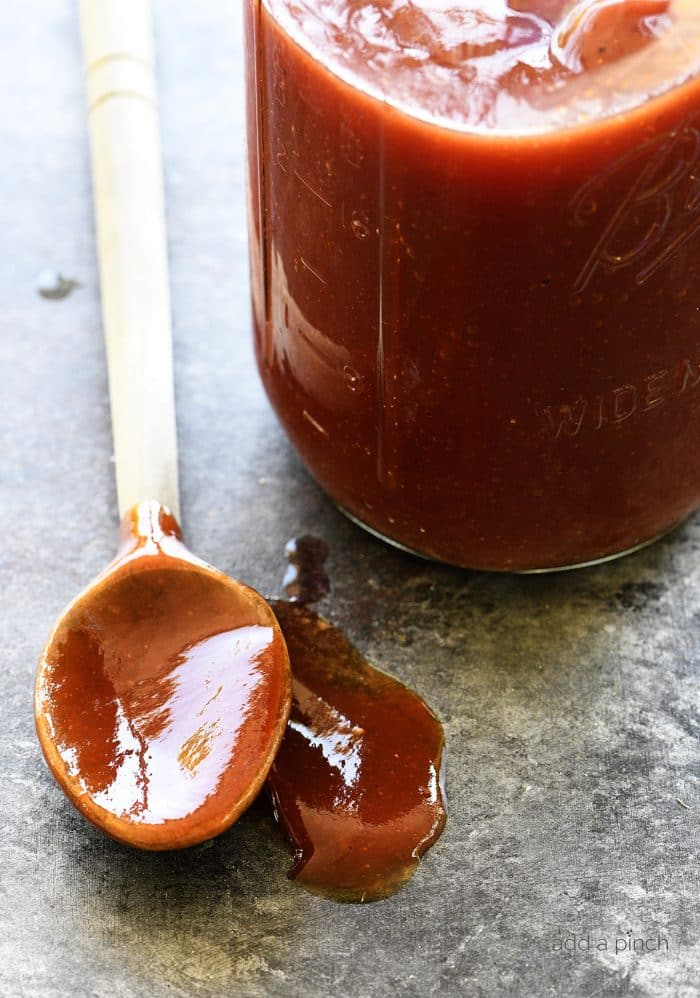
Sugar and Other Sweeteners
Sugar and other sweeteners can be an important pantry staple to keep stocked. However, if someone in your family can’t have real sugar, make sure you keep a substitute sweetener that they can enjoy in the pantry. The various sugars I listed have different tastes, textures and uses so it’s good to think about having some of all of them (or substitutes) on hand.
How long does sugar and other sweeteners last?
Like flour, sugars should be stored in a cool, dry environment to extend the shelf life as much as possible. Leave the sugar in the original packaging inside of an airtight container or inside of a large zip top storage bag. When ready to use, decant into a large airtight container.
Honey is one of the easiest things to keep. There are just a few simple tricks for the best way to store honey. Simply keep it in a cool place away from any direct sunlight and in a tightly sealed container. It is recommended to use the original container the honey came in; however, any clean, dry, well-sealing glass jar or food-safe plastic container will work.
Maple syrup stores very similarly to honey, although once opened it must be refrigerated.
Substitutions List
There are times when you may need to substitute one type of sweetener for another. I’ve listed general substitutions below. This does not include all substitutions possible. However, you will want to test these substitutions for your liking. The type of sweetener used in certain recipes, such as baking, is chosen for a specific purpose. Substitutions may alter the texture, taste and results.
- Coconut sugar – for each cup of sugar, use the same amount of coconut sugar.
- Agave nectar – for each cup of sugar, use 2/3 cup of agave nectar. Reduce liquids in baking recipe by 1/4 cup and oven temperature by 25º F.
- Honey – for each cup of sugar, use 3/4 cup of honey.
- Maple Syrup – for each cup of sugar, use 3/4 cup of maple syrup. Reduce the liquids in baking recipes by 3 tablespoons.
- Brown Sugar – for each cup of brown sugar called for, use 1 cup of sugar plus 2 teaspoons of molasses for light brown sugar or 1 tablespoon of molasses for dark brown sugar.
- Fruit puree – for each cup of sugar, use 1 cup of fruit such as mashed bananas, applesauce, or pureed figs for example.
Recipe Ideas Using Sugar
Recipe Ideas Using Honey
- Honey Nut Granola
- Honey Soy Chicken Thighs
- Honey Soy Skirt Steak
- Honey Mustard Chicken
- Homemade BBQ Sauce
Recipe Ideas Using Maple Syrup

Baking Soda, Baking Powder, Yeast, Cornstarch
Each of these dry ingredients serves different and important purposes in cooking and baking. Whether used as leavening for breads and dough or for thickening gravies or sauces, bread or baking cakes and pies, all of these staples are essentials in my kitchen.
How Long Does Baking Soda, Baking Powder, Yeast, and Cornstarch Last?
Baking soda is best to transfer to an airtight container once the packaging has been opened since it is known to absorb odors. Generally, the shelf life of an unopened package of baking soda can be up to 2 years while an opened package will last about 6 months. Older baking soda may lose potency in leavening but is still safe to use. If it is past prime to use for cooking, you can use baking soda for cleaning around the home.
Baking powder should be stored in a cool, dark, dry place in an airtight container. Many brands package their baking powder in small metal cans with a tight-fitting lid. These are fine to leave your baking powder stored in your pantry. If packaged in any other container, it is recommended to decant your baking powder into an airtight container. The shelf life of an opened package of baking powder is 6 months while unopened is 1 year. To test if your baking powder is still good, add 1/2 teaspoon of baking powder to 1/2 cup of warm water. If it bubbles, the baking powder is still potent for baking.
Yeast should be stored in a cool, dark, dry place. Yeast packages are marked with a best by date for optimal potency. To test if your yeast is still active, simply sprinkle the yeast onto the warm liquid called for in your recipe. This is called “proofing”. If the yeast bubbles, it is still active. If it does not, it is not.
Cornstarch should be stored in a cool, dark, dry place. It is best in its original container and as long as it is kept dry, should have an indefinite storage.
Substitutions List
Baking Soda – If you do not have baking soda, you can substitute with 3 teaspoons of baking powder for every teaspoon of baking soda called for in the recipe.
Baking Powder – If you do not have baking powder, you can substitute 1/4 teaspoon of baking soda plus 1/2 teaspoon cream of tartar for every teaspoon of baking powder called for in the recipe.
Yeast – While you can substitute an equal amount of baking powder for the amount of yeast called for in a recipe, it just does not yield the exact same results as yeast. If you do use it in place of the yeast, skip the proofing and rising process and quickly get your bread or rolls into a hot oven for the best results.
Cornstarch – Use an equal amount of arrowroot powder or potato starch for the cornstarch. You can also use all-purpose flour. If using the flour to thicken a sauce, make a slurry first by mixing 2 tablespoons all-purpose flour + 1/4 cup cold water for each cup of liquid. Then, whisk until smooth and well combined. Slowly pour the slurry into the liquid, whisking constantly to combine.
Recipe Ideas Using Baking Soda
Recipe Ideas Using Baking Powder
Recipe Ideas Using Yeast
Recipe Ideas Using Cornstarch
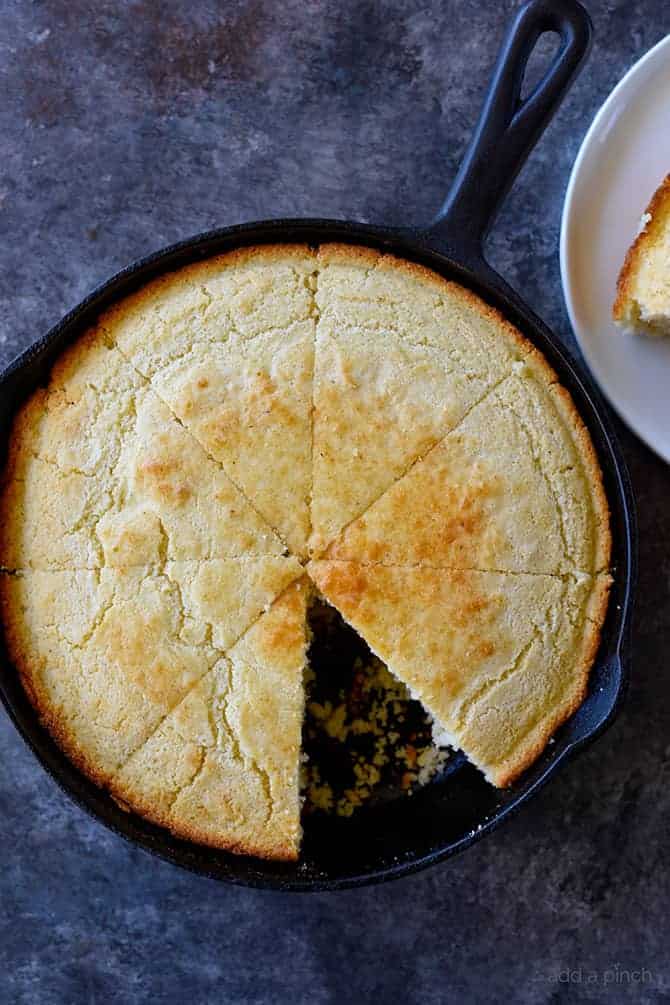
Cornmeal
Cornmeal makes a wonderful pantry staple, especially in a Southern kitchen. It is used on pizza peels when making homemade pizza, baking bread and also in batters.
How Long Does Cornmeal Last?
Cornmeal is best stored in a cool, dark place. It is a favorite of pests, so I recommend storing your cornmeal in an airtight container. Since cornmeal can easily go rancid, it is best stored in the freezer if you have the space.
Recipe Ideas Using Cornmeal
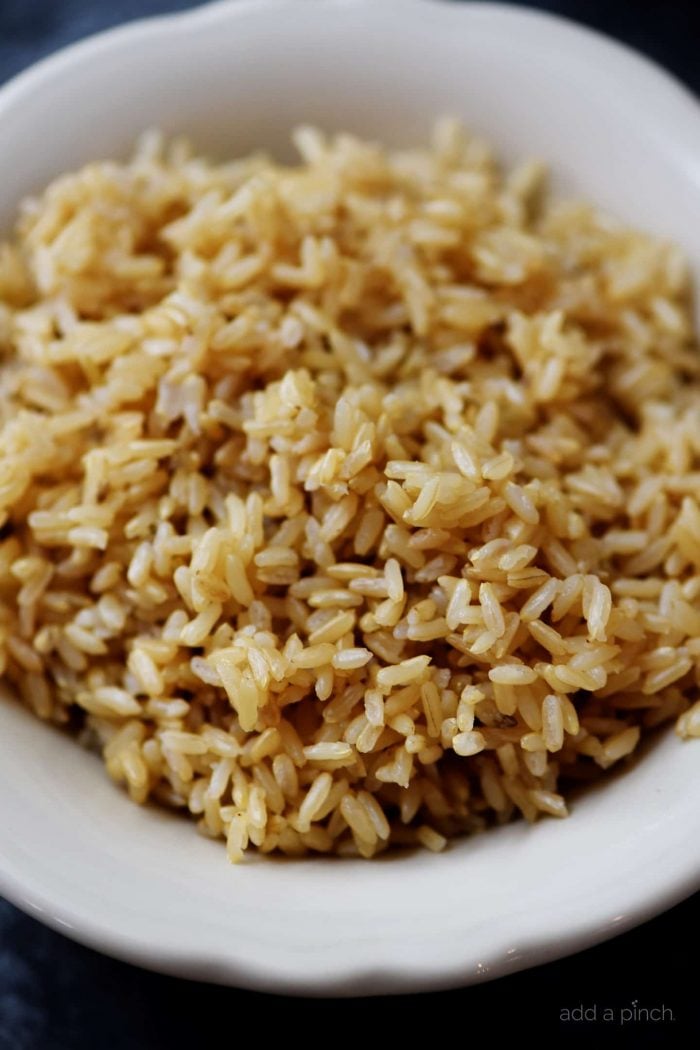
Rice
Rice makes a wonderful pantry staple that can be used to extends a meal while also providing carbohydrates and fiber or as a meal on its own. Brown rice and white rice recipes are delicious dishes we often enjoy.
How Long Does Rice Last?
Rice is best stored in a cool, dark, dry place. Rice can attract pests in your pantry; therefore, I store in an airtight container or in zip-top bags. I also like to store rice in my freezer. To do this, I like to vacuum seal the rice and then store in the freezer to extend the shelf life. The general shelf life of brown rice is 6-8 months in the pantry and 2 years in the freezer.
You may also wonder how long does cooked rice last. Cooked rice lasts for 4-7 days in the refrigerator and up to 3 months in the freezer in a freezer safe container.
Rice Recipe Ideas
- Instant Pot Brown Rice
- How to Cook White Rice
- Chicken and Rice Casserole
- Spanish Rice with Ground Beef
- Burrito Bowls
- Cilantro Lime Rice

Pasta
Pasta is delicious cooked simply and served with a bit of olive oil or butter and Stone House Seasoning – and maybe a sprinkle or Parmesan if you have it. But it also can be used as a quick main dish by stirring in just a few other ingredients.
How Long Does Pasta Last?
Dried pasta has a wonderful shelf life. It is best stored in a cool, dry place that is free of any direct sunlight. I generally store my pasta in the original package, but you can also place the package inside of an airtight container or in zip-top bags. The best-by date included on the packaging generally is for 1-2 years depending on the ingredients of the pasta.
Once cooked, pasta lasts for 4-7 days in the refrigerator.
Pasta Recipe Ideas
- Mac and Cheese
- Alfredo Sauce
- Skillet Lasagna
- Spaghetti
- Lo Mein
- Pasta Salad
- Lemon Parmesan Pasta
- Pasta Carbonara
- Pesto Pasta Salad
- BLT Pasta Salad
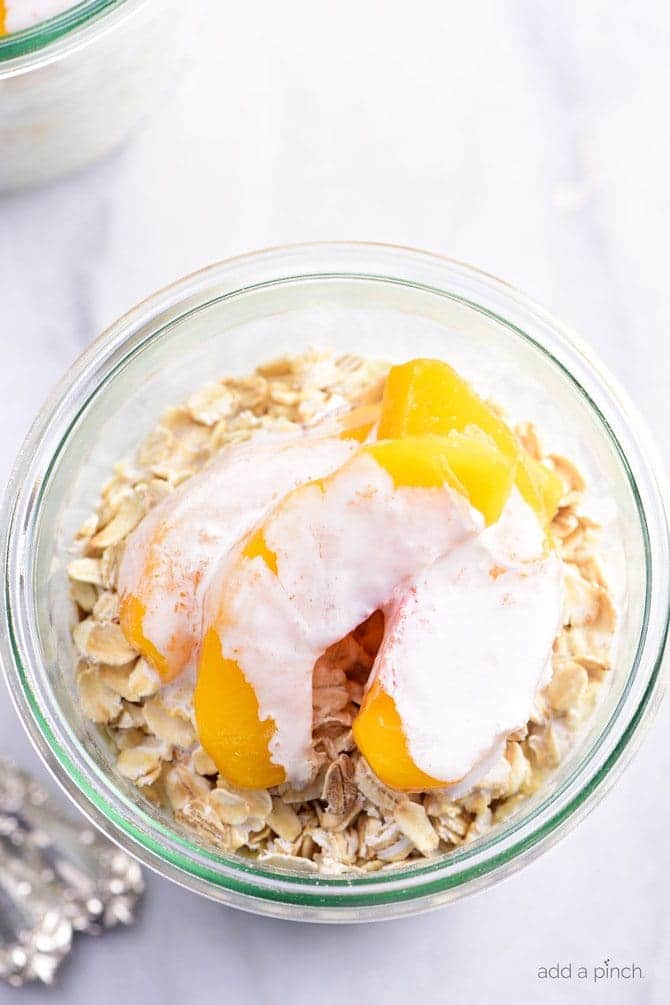
Oats
Oats are so versatile and can be used in so many recipes, making them such a perfect pantry staple. You can also pulse rolled oats in a high-speed blender to create your own oat flour. This flour is a whole grain flour that can be used mixed in with other whole grain flours in recipes.
How Long Do Oats Last?
Oats have an excellent shelf life. Rolled Oats have a shelf life of about 18-24 months when stored in the original packaging in a cool, dry place such as a pantry. Organic oats may have a shorter shelf life. Packages of oats that include fruits and sweeteners generally last about 6 months.
Oat Recipe Ideas
- Peaches and Cream Overnight Oats
- Strawberry Overnight Oats
- Oat Milk
- Homemade Granola
- Chocolate No Bake Cookies
- Lace Cookies
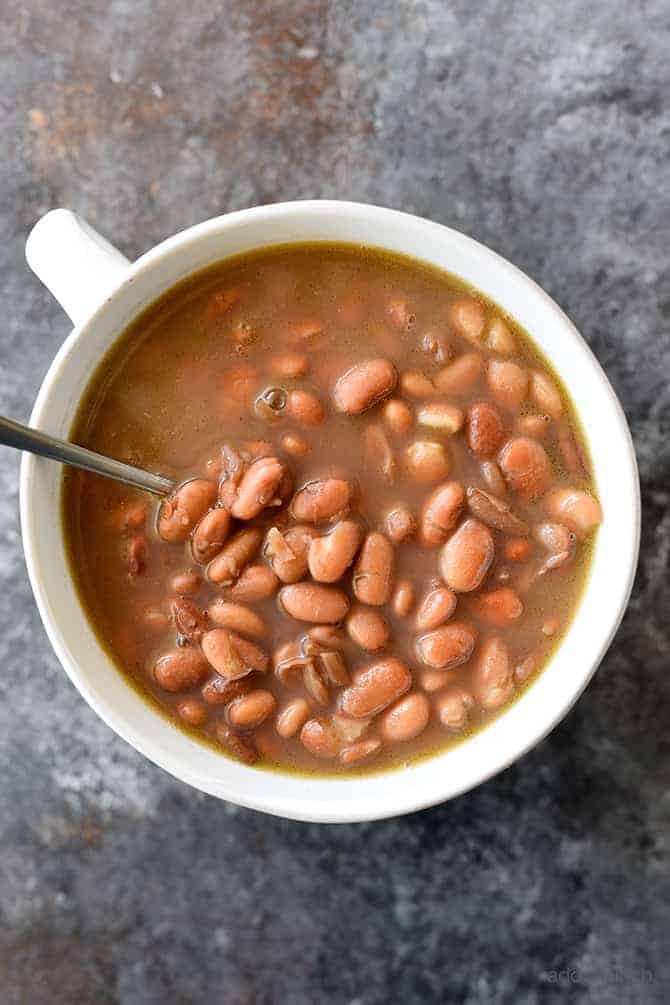
Beans and Pulses: Dried and Canned
Beans and pulses are delicious in soups, salads, as a side dish or as a main dish with a hearty source of protein and fiber. I keep both dry and canned beans to use. Canned beans are already cooked and are great for quick and easy meals. Dry beans (and peas) are a bit less expensive and can easily be cooked on the stove top, or in a slow cooker or instant pot.
How Long Do Dried Beans Last?
Dried beans and peas have a shelf life of approximately, in a cool, dry place in an airtight container, they have a minimum shelf life of 1 year but will keep indefinitely. The nutrition and flavor may diminish over time, so the best use by timeframe I follow is 12 to 24 months. I also recommend vacuum sealing and freezing to extend this timeframe to up to 48 months.
How Long Do Canned Beans Last?
Canned beans are packaged with a best by date that is printed onto the can. You should protect the cans from any dents, rust, and maintain them in a cool, dry location. Inspect the cans when you open them for any discoloration or odor from the contents. If any found, it is best to discard.
Source: USDA
Bean Recipe Ideas
- Pinto Beans
- Black-eyed Peas
- Red Beans & Rice
- Black Bean Chili
- Minestrone
- Pasta Fagioli
- Homemade Hummus
- Chicken Tortilla Soup
- Red Pepper Black Bean Soup
- Refried Beans
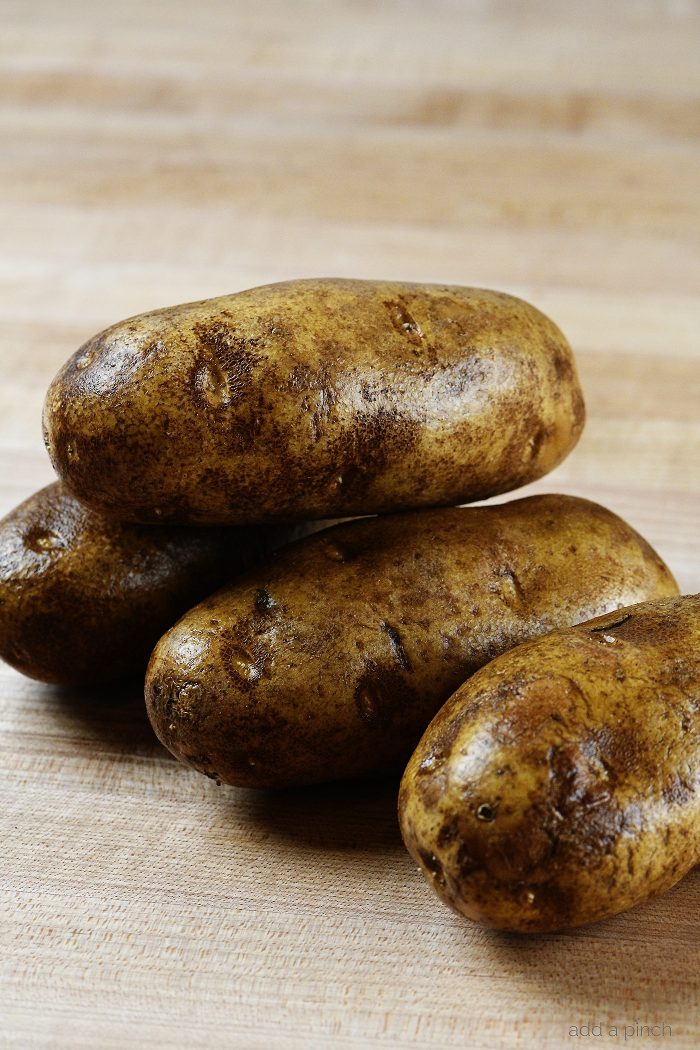
Potatoes and Onions
Potatoes are a great vegetable to keep on hand to add fiber and substance to your meals. And while potatoes are vegetables, I still list them as a pantry staple because they can be a substantial part of a meal and are great to keep on hand as they keep fresh for a long time. I like to keep a few different kinds of potatoes, but you’ll want to pick based on what your family enjoys.
How Long Do Potatoes Last?
Potatoes will last 1 to 2 weeks when properly stored in a cool, dry, dark place. If stored in a cold storage location (warmer than a refrigerator, but at about 50º F) the potatoes may last longer. Most organic potatoes have not been treated and therefore will have a shorter shelf life.
Source: USDA
Potato Recipe Ideas
- Baked Potatoes
- Sweet Potatoes
- Mashed Potatoes
- Potato Soup
- Twice Baked Potatoes
- Breakfast Potatoes
- Sweet Potato Fries
- Sweet Potato Chili
- Stuffed Sweet Potato
- Enchilada Stuffed Baked Potatoes
- French Onion Soup

Canned Fruits and Vegetables
Again, you’ll want your family’s favorites, but I generally keep an assortment of canned fruits and vegetables on hand. Vegetables are great to use as a side dish, in soups and stews, and casseroles. The fruits can be added to oatmeal or cereal for breakfast, eaten on their own, or added to cobblers and pies.
How Long Do Canned Fruits and Vegetables Last?
Commercially canned items have an extended shelf life. According to the USDA, highly acidic foods such as canned tomatoes and fruits should last for 12-18 months. Low-acidic foods such as vegetables and meats should last between 2 – 5 years, if properly stored. Once opened, they should be transferred to a non-metal storage container, refrigerated and consumed within 7 days.
Home-canned items should be consumed within 1 year of canning.
Source: USDA
Canned Fruits Vegetables Recipe Ideas

Protein
Choose your family’s favorites sources of protein to keep on hand. We generally like to keep a few sources such as peanut butter or other nut butters and tuna. You can also find canned chicken that can be used in any number of recipes. I like to include a spoonful of the nut butter in with my oatmeal in the mornings and the tuna can be added to cooked pasta for a quick and easy pasta salad in a flash.
How Long Does Canned Tuna Last?
As mentioned above with canned fruits and vegetables, the USDA states that commercially canned proteins such as tuna, chicken, and beef, which are considered low-acidic foods, should have a shelf life between 2-5 years when properly stored.
Source: USDA
How Long Does Peanut Butter Last? Other Nut Butters?
Peanut butter and other nut butters should have a best by date marked on the package. It is best to follow that timeframe.
Canned Tuna Recipe Ideas
Peanut Butter Recipe Ideas

Condiments, Spices, and Oils
Just as sugar is important to add a little sweetness to recipes, spices, condiments and various oils all play a big part in amping up the flavor of our foods. Olive oil, canola or vegetable oil, coconut oil and many others are all regularly used in most kitchens. Salt and pepper have regular residence beside the stoves and on the kitchen tables in most homes around the world. My family enjoys my Stone House Seasoning recipe in many recipes, as well as kept on the table for seasoning some foods. Spices of all kinds complete the flavor in recipes and are such important pantry staples to have on hand. While I also keep homemade stocks and broths in my freezer, I love to have some in my pantry as well. I’ll generally keep chicken, beef and vegetable.
How Long Do Spices Last?
Generally, dried herbs have a shelf life of 1 to 3 years, ground spices 2 to 3 years and whole spices for up to 4 years. Store dried herbs and spices in airtight containers in a cool, dark place away from direct sunlight or humidity.
Recipe Ideas
- Taco Seasoning
- Ranch Seasoning
- Italian Seasoning
- Homemade Cream of Chicken Soup
- Pizza Sauce
- Enchilada Sauce
- BBQ Sauce
- Buffalo Sauce
- Ranch Dressing
- Italian Dressing
- Balsamic Vinaigrette
Restock and Replenish
As a rule of thumb, I do my best to replenish these staples as we have used them to make sure we stay well-stocked. I find it much easier – and more budget friendly – to restock the pantry as items are used. But in times when I am limiting my visits to the grocery store, I try to keep a running list for my next visit or even order in some of these items from online stores that ship such as Kroger, Target, Costco, Walmart and Amazon.
What items are essential Pantry Staples in your kitchen? I’d love for you to share them in the Comments.
Take Care,
Robyn xo

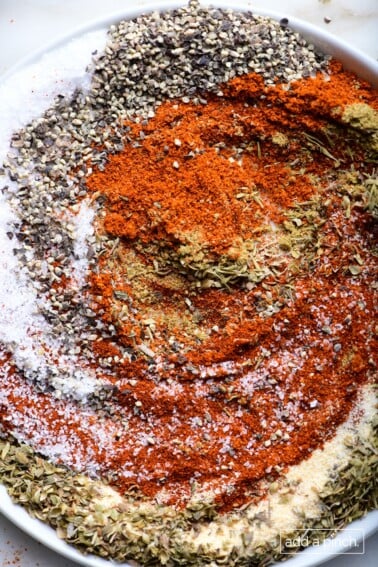
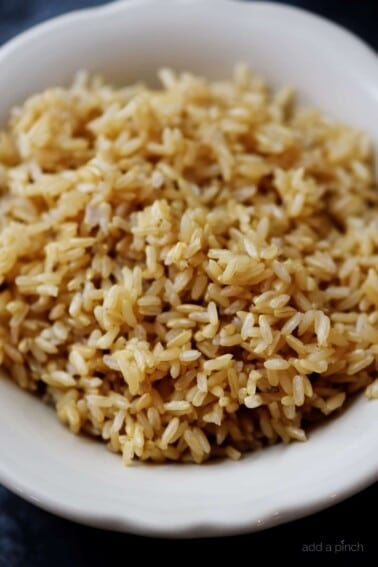
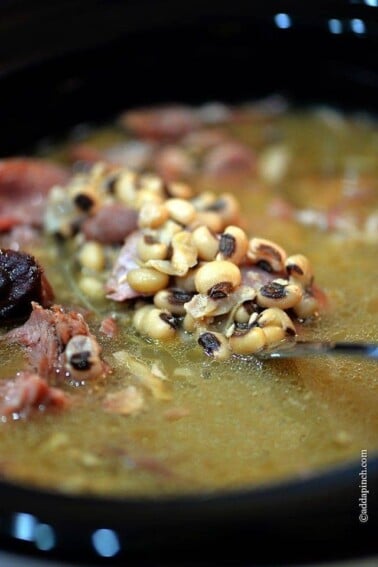
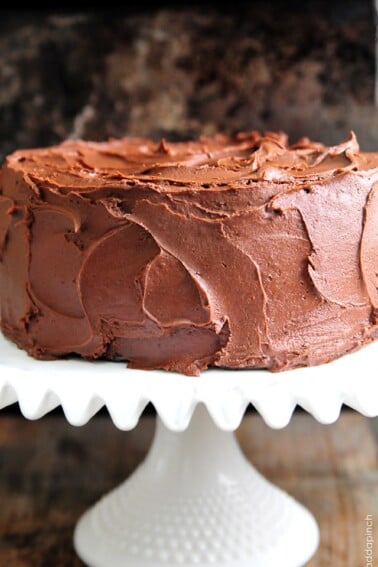
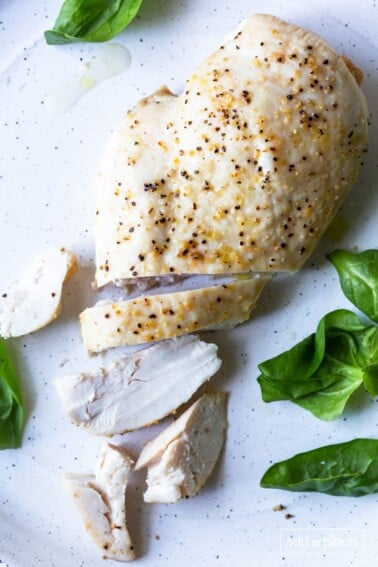

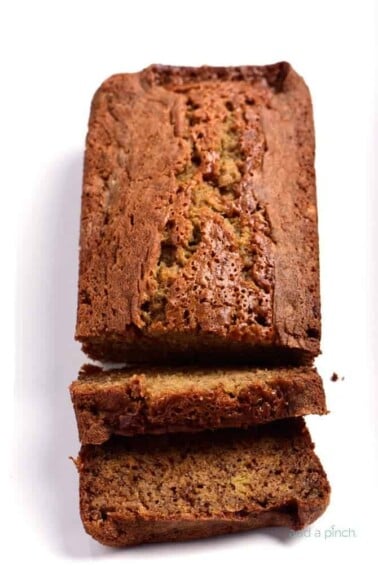
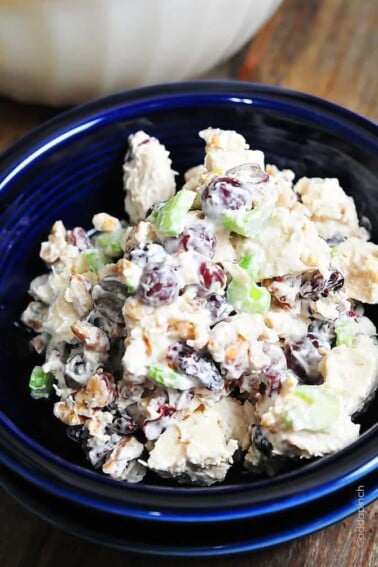










Hey, this helped me out a lot. Thank you
Thanks, Gentora, I’m so happy this helped you.